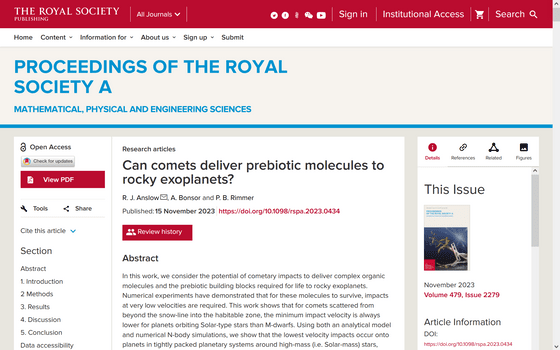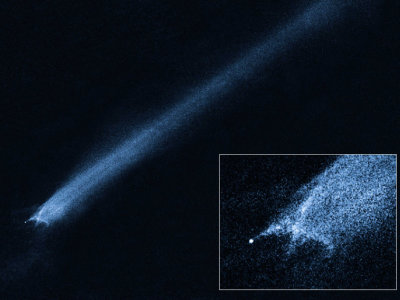Possibility that ``a comet that bounces between planets'' carried the origin of life

The origin of life on Earth is full of mysteries, and one theory is that comets brought the organic matter that forms the basis of life. However, because comets are moving at tremendous speeds, the organic matter would normally be destroyed by the heat and impact of the collision. Assuming that comets carried organic matter, research into how they carried it showed that the comet may have moved in a bouncing manner.
Can comets deliver prebiotic molecules to rocky exoplanets? | Proceedings of the Royal Society A: Mathematical, Physical and Engineering Sciences

'Bouncing' comets could deliver building bloc | EurekAlert!
'Bouncing' comets may be able to spread life throughout the universe | Space
https://www.space.com/comets-bouncing-seed-life-on-exoplanets
In recent decades, scientists have been expanding their knowledge of how comets may have led to the birth of life. For example, samples recovered from comet Wirth II by NASA's Stardust mission in 2009 contained glycine, a type of amino acid and a building block of proteins. The European Space Agency's Rosetta mission also found organic compounds in the atmosphere of comet Churyumov-Gerasimenko.

However, these organic compounds can be destroyed during a collision with a planet, so to prove the comet origin theory, we must establish a scenario in which the organic compounds survive intact.
When Richard Anslow and his colleagues at the Institute of Astronomy at the University of Cambridge conducted simulations, they found that if the comet moves at a relatively slow speed of less than 15 km/s, it is possible for organic matter to propagate.
A comet slows down due to the gravitational pull of a planet, but in order to slow down to less than 15 km/s, it must be pulled by the gravitational pull of a planet, and then be pulled by the gravitational pull of another planet before colliding. . If it bounces between planets in this way, it will be possible to enter the planet's atmosphere while preserving its organic compounds.

The research team is also developing a model that can show the orbit of comets, which they plan to use in the search for planets outside our solar system that may harbor life. 'We wanted to see if comets can carry complex molecules,' Anslow said. 'The molecules that started life on Earth may have come from comets, and the same is true for other parts of the galaxy. It could also apply to planets.”
Related Posts:
in Science, Posted by log1p_kr







